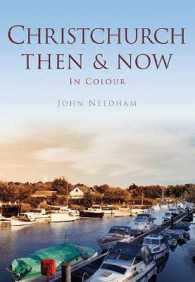- ホーム
- > 洋書
- > 英文書
- > Literary Criticism
Full Description
Based on ten years of research, Santanu Das's India, Empire, and First World War Culture: Writings, Images, and Songs recovers the sensuous experience of combatants, non-combatants and civilians from undivided India in the 1914-1918 conflict and their socio-cultural, visual, and literary worlds. Around 1.5 million Indians were recruited, of whom over a million served abroad. Das draws on a variety of fresh, unusual sources - objects, images, rumours, streetpamphlets, letters, diaries, sound-recordings, folksongs, testimonies, poetry, essays, and fiction - to produce the first cultural and literary history, moving from recruitment tactics in villages through sepoy traces and feelings in battlefields, hospitals, and POW camps to post-war reflections on Europe and empire. Combining archival excavation in different countries across several continents with investigative readings of Gandhi, Kipling, Iqbal, Naidu, Nazrul, Tagore, and Anand, this imaginative study opens up the worlds of sepoys and labourers, men and women, nationalists, artists, and intellectuals, trying to make sense of home and the world in times of war.
Contents
Introduction; Part I. The Restless Home Front; 1. The imperial-nationalist self: anti-discrimination, aspiration, and anxiety; 2. Sonorous fields: recruitment, resistance, and recitative in the Punjab; Part II. Race and Representation: 3. Five shades of brown: the sepoy-body in visual culture; 4. Imperial antibiotic: sepoy and the Raj; Part III. The Sepoy Heart: 5. Touching feeling: letters, poems, prayers, and songs of sepoys in Europe 1914-18; 6. 'Their lives have become ours': occupation, captivity, and lateral contact in Mesopotamia 1914-1918; 7. Transnational lives and peripheral visions; Part IV. Literary and Intellectual Cultures: 8. Literary imaginings; 9. The Indian English war novel: Across the Black Waters; 10. Post-war world and 'the future of mankind': Aurobindo, Iqbal, and Tagore.







